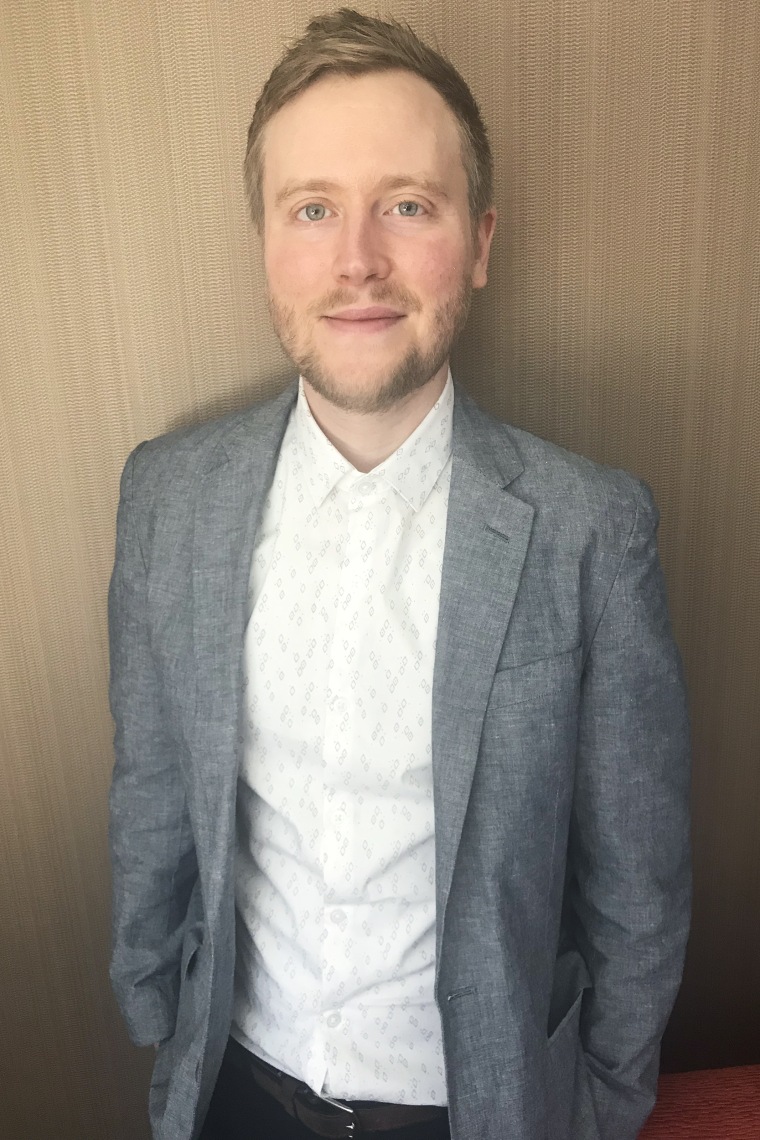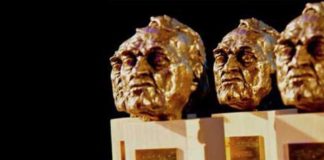“I love gay people,” activist and playwright Larry Kramer proclaimed at the outset of a 2004 speech in New York City. “I think we’re better than other people. I really do. I think we’re smarter and more talented and more aware.”
A new study making waves among LGBTQ-focused academics lends empirical credence to the iconic Act Up co-founder’s prideful claims — not to the supposed sweeping superiority of gay men, rather to the more narrow assertion that this group is remarkably inclined to excel academically.
But the paper, which was published in the American Sociological Review on Feb. 20, comes to starkly opposing conclusions about how growing up gay appears to affect the academic performance of males versus females.

Joel Mittleman, a University of Notre Dame sociologist and the paper’s sole author, found that on an array of academic measures, gay males outperform all other groups on average, across all major racial groups. Conversely, he concluded that lesbians perform more poorly in school overall and that Black gay women have a much lower college graduation rate than their white counterparts.
“This article is focusing a lens on what we do to all kids,” Lisa Diamond, a psychology professor at the University of Utah, said of the societal pressures that appear to impede lesbians in school even as these stressors possibly unnerve gay males into compensating for homophobia through academic striving. “And the most vulnerable kids are going to show it first.”
In recent years, academics, lawmakers and journalists alike have sounded an increasingly urgent alarm that on balance, American males are stuck in a scholastic funk. As the economic gap between those with and without a college degree has widened, women’s college graduation rate has risen in tandem, but men’s rate has remained largely stagnant for decades. Today, women comprise 59.2 percent of college students, according to the National Student Clearinghouse.
Mittleman’s research indicates that this characterization of the educational gender gap is critically lacking in specificity. It is, in fact, straight males who tend to be mired in a scholastic morass. And the considerable academic progress that young women have charted since the advent of second-wave feminism has been largely restricted to the heterosexuals among them.
Benefit of adding sexuality questions to surveys
Mittleman was able to reach his striking research findings thanks to a move during President Barack Obama’s second term to add questions about sexual orientation to a trio of federally funded, nationally representative surveys. These major annual surveys — which focus on health, drug use and crime victimization — provided the sociologist with information regarding nearly half a million Americans’ diplomas.
Additionally, the National Center for Education Statistics’ High School Longitudinal Study posed questions about sexuality for the first time to the cohort it followed between 2009 and 2017. From this, Mittleman mined a trove of data including 15,270 students’ high school and undergraduate transcripts.
The three surveys of American adults consistently indicated that gay men are far more likely than straight men to have graduated from high school or college, with just over half of gay men having earned a college degree, compared with about 35 percent of straight men. Some 6 percent of gay men have a Ph.D., J.D. or M.D. — a rate 50 percent higher than that of straight men. Mittleman found that gay men’s considerably higher levels of educational attainment hold even after taking into account differences in men’s race and birth cohorts. What’s more, gay men’s college graduation rate dramatically bests even that of straight women, about one-third of whom have a bachelor’s degree.
The longitudinal survey showed that compared with their straight male peers, gay males earned higher GPAs in high school and college, enrolled in harder classes, took school more seriously, had more academically minded friends and had a much lower rate of ever dropping out for a month or more. In stark contrast, these performance disparities were largely reversed when comparing lesbians with straight girls. Most strikingly, 26 percent of lesbians reported at least one dropout period, compared with 15 percent of heterosexual females.
The U.S. lesbian population’s overall college graduation rate, which ranged between 41 percent and 47 percent in the three survey studies, is significantly higher than that of straight women. But Mittleman found this advantage was limited almost entirely to white lesbians, and among women born more recently, gay women’s educational edge has eroded.
Historically, girls have received better grades than boys. But during much of the 20th century, societal constraints — including the predominant expectation that young women would become wives and mothers and not pursue careers — suppressed their graduation rates. In theory, this left lesbians with an advantage. But as constrictions on women’s potential have eased since the 1960s, straight women’s college graduation rate has risen to the point of statistical parity with lesbians among today’s young adults.
The Nancy Drew effect
Searching for the drivers of these differences in school performance between straight and gay students, Mittleman used a machine-learning algorithm to identify response patterns to survey questions that predicted being male versus female among members of the longitudinal cohort. In turn, he found that being atypical for their gender in survey responses helped explain at least part of the gay students’ GPA variation.
This suggested that not just sexual orientation, but its intersection with gender affectation could have influenced how well the gay and lesbians students did in school.
Seeking to explain the sociocultural dynamics possibly at play in these complex equations, Mittleman pointed in his paper to the feminine archetype, long a prized ideal in white, middle-American culture, of the demurely diligent student. (Think Nancy Drew.)
Characterizing masculinity as a fragile and insecure state, Mittleman argued that the long-standing anti-intellectual bias that plagues many American boys is driven in large part by their urge to assert their masculinity by differentiating themselves from the good-girl archetype.
Gay boys, however, appear willing — even eager — to flout gender norms in academics.
“To the extent that it’s feminine to study and appreciate validation in an academic sphere, the gay boys will have an advantage,” Yale School of Public Health psychologist John Pachankis said.
On the flip side, young lesbians may be disinclined to identify with the femininity intrinsic to the good-student ideal, Mittleman suggested. Moreover, by tending to present as more masculine, lesbians may be slapped with a “bad girl” label by educational authorities, subjected disproportionately to school punishment and generally discouraged academically. This could hold especially true for Black girls, whom white authority figures already tend to stereotype as masculine, according to previous research.
“Girls who present as masculine are seen as troublemakers, are seen as suspicious in some way,” Mittleman said.
The ‘Best Little Boy in the World’ phenomenon
An additional factor that Mittleman argued drives the average gay boy to surpass even the average straight girl academically is what’s known in queer psychology as the “Best Little Boy in the World” phenomenon. This refers to the title of the 1973 memoir by former Democratic National Committee treasurer Andrew Tobias, in which he chronicled his youthful crusade to appease his internalized homophobia through admission to Harvard University and other feats of superlative achievement.
In a 2013 paper published in Basic and Applied Social Psychology, psychologist Mark Hatzenbuehler, now of Harvard University, and Pachankis found evidence suggesting that gay male college students indeed sought to compensate for anti-gay stigma by deriving their self-worth in part through academic mastery and other forms of competition.
This psychological paradigm also comprises the bedrock of “The Velvet Rage,” psychologist Alan Downs’ go-to bible for queer men, published in 2005, on “overcoming the pain of growing up gay in a straight man’s world.”
From a young age … I was determined to become a doctor so I could prove to everyone that I could be successful even though I was gay.
Dr. Chris remishofsky
While Mittleman is straight, he said he was nevertheless bullied as a child for “not being sufficiently masculine.” His brother, Dr. Chris Remishofsky, is gay and said the findings of Mittleman’s paper closely reflect his personal experience.
“From a young age,” said Remishofsky, a dermatologist in Sterling Heights, Michigan, “I was determined to become a doctor so I could prove to everyone that I could be successful even though I was gay.”
An analysis by the Brookings Institution’s Hamilton Project published in January found that gay male couples earn $30,000 more annually than lesbian couples.
Ilan Meyer, a researcher at UCLA’s Williams Institute, expressed intrigue over the story Mittleman’s paper tells of many gay men apparently overcoming considerable odds. Meyer pointed to the Centers for Disease Control and Prevention’s Youth Risk Behavior Surveillance reports that have chronicled the myriad stressors lesbian, gay, bisexual and transgender young people weather in school and the litany of deleterious impacts, including depression and suicidality.
Indeed, Mittleman found that on the whole, lesbian, gay and bisexual young people reported feeling more unsafe in school and suffered higher levels of discrimination and what’s known as minority stress than their straight peers.
“The effect of resilience to override effectively all stressors is quite amazing,” Meyer said. “We’re basically saying gay boys have a terrible school environment, but still, on average, they’re doing fantastically well. To me, that is still a major question — how does that work?”
The price queer youth pay
Brian Mustanski, a professor of medical social sciences at Northwestern University, cautioned that the relative success of gay men could amount to a double-edged sword.
“While certainly, it’s good news for the young gay men that they’re able to succeed well academically, I do have some real concerns about what kind of pressure they’re putting on themselves,” he said.
Suggesting that feverish academic striving in search of validation can come at a steep cost to mental and physical health, Mustanski pointed to his own research findings that gay men have disproportionately high levels of chronic inflammation. He hypothesized that this physical effect is fueled by minority stress and that it could raise the risk of health problems such as cardiovascular disease.
Kirsty A. Clark, a psychiatric epidemiologist at Vanderbilt University, spoke to the plight of young lesbians and said “there is strong support” in scientific literature for Mittleman’s hypothesis that they incur an academic penalty for flouting gender norms. She noted that gay women, in particular lesbians of color, tend to be disproportionately singled out for school discipline and are overrepresented in juvenile correctional facilities.
“We need safe and inclusive policies that protect all students from bullying and differential treatment by school staff regardless of the student’s sexual orientation or gender expression,” Clark said. She called for special support for “those students who may be most likely to face difficulties in school, including sexual minority girls.”
Clark further called for reform of zero-tolerance school disciplinary policies, which disproportionately impact members of minority demographics, such as lesbians of color.
While joining the other experts in praising what he called a “beautifully done study,” UCLA psychologist Patrick Wilson nevertheless expressed concern that Mittleman’s findings may lead the public to paint student-achievement trends in overly broad strokes.
Noting what an overwhelmingly unsafe place school still is for many queer kids, Wilson further cautioned the public not to conclude, for example, “that a poor Black gay boy living in Montgomery or Mobile, Alabama, feminine-presenting and gender-nonconforming, is actually succeeding in high school right now.”








